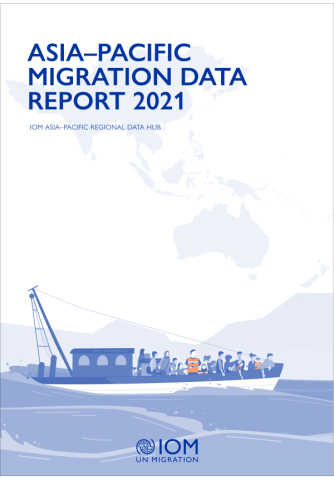Knowledge Platform
Asia–Pacific Migration Data Report 2021
The Asia–Pacific Migration Data Report series is the flagship publication for the region since 2020.
The Asia–Pacific Migration Data Report 2021 consolidates the latest evidence on the migration landscape in the region in 2021, principally through the lens of recovery from the COVID-19 pandemic. Over the course of 2021, Asia and the Pacific endured COVID-19 pandemic conditions, complex humanitarian challenges and political changes in Afghanistan and Myanmar and pronounced effects of climate change. Migration patterns were altered by these crises, but migrants showed remarkable resilience and were essential to early recovery efforts.
Drawing on available international, regional and national data sources, the report is structured around the six Thematic Pillars of IOM Asia–Pacific Regional Data Hub: Migration Policy, Migration Statistics, Types of Migration, Migration and Vulnerabilities, Migration and Development, and Migration and Innovation. The newest thematic pillar, Migration and Innovation, investigates how migration influences and is affected by innovation. The report monitors progress toward the Sustainable Development Goals, the Global Compact for Safe, Orderly and Regular Migration and the Migration Governance Indicators. It also provides recommendations on strengthening the much-needed evidence base on migration in the region.
